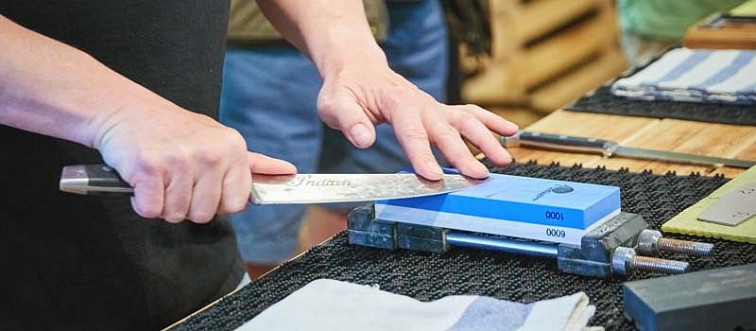The Craft axe is mainly suitable for precision carpentry work and splitting smaller wood, not for blunt blows on large logs. It is ideal for outdoor activities such as camping as well as for carpentry work.
The axe head is made by the Warikomi method. A hot piece of iron or mild steel is split and a smaller piece of hard steel is inserted, then the steel is forged together to form one piece, the axe head. This creates a so-called sandwich - two softer steels with a hard cutting core. These axes are made of 1045 carbon steel. Each head bears a mark, the so-called Traditional Production Certificate, introduced in 1974 by the Japanese government to preserve traditional techniques and special local crafts. On the head are the traditional grooves - three on the left side, four on the right - seven stripes represent the eight mountains, but the eighth mountain is not mentioned because it can bring bad luck.
The top is made of white oak from northern Japan. The handle is treated with a colourless varnish for easier removal of surface dirt.
The axes are handmade at Mizuno Seisakujo in Sanjo, Japan. Master blacksmith Mizuno and his sons forge axes using traditional techniques from ancient times with great care. They are made of carbon steel, are easier to sharpen and last longer, but need more care. After each use, the head should be cleaned, dried and then a small layer of vegetable oil (for example, camellia oil) should be applied and placed in the case.





